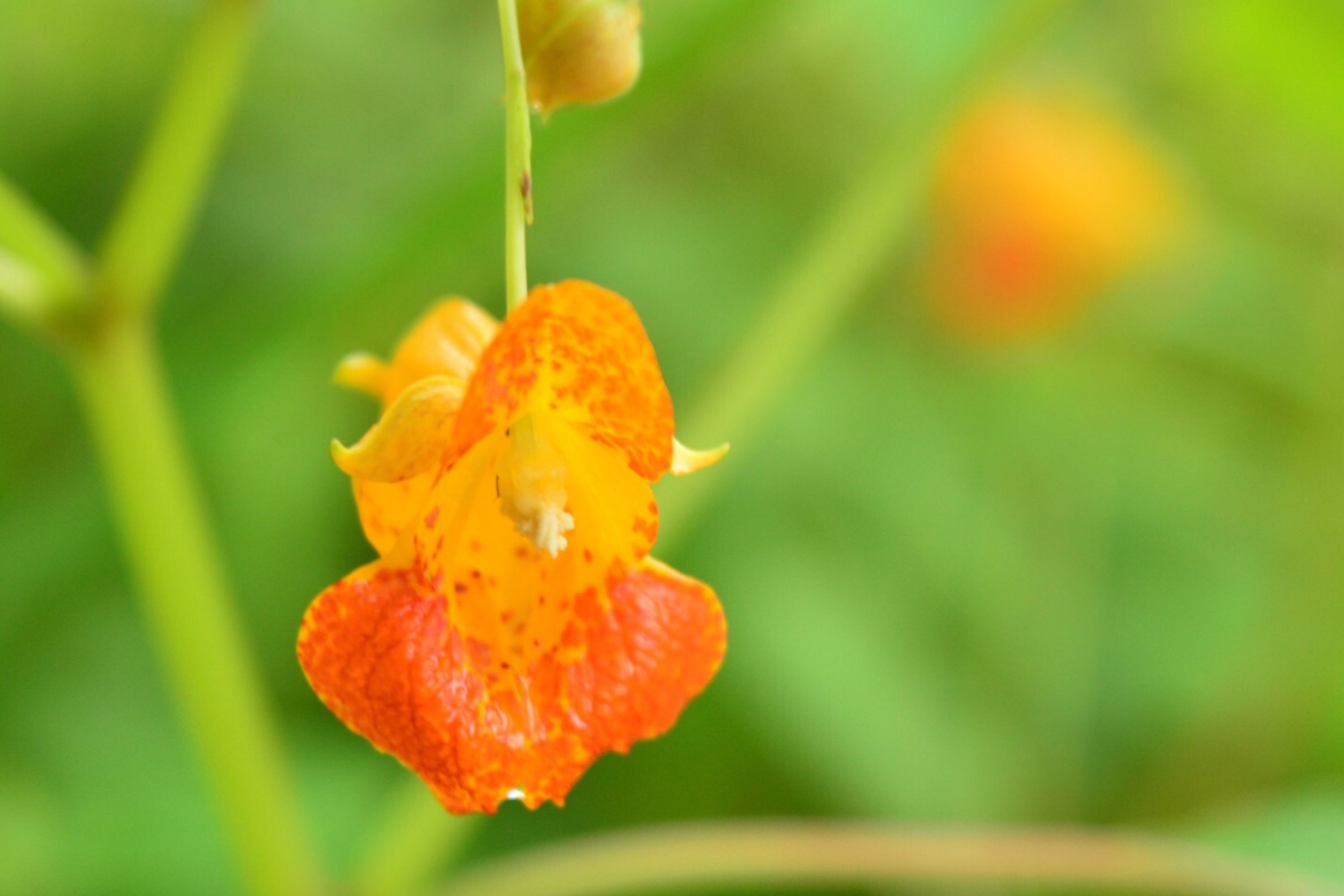Jewelweed
(Impatiens capensis)

Description
Impatiens capensis, commonly known as Jewelweed, is a beautiful and fascinating plant native to North America. It is a member of the family Balsaminaceae and is closely related to the garden impatiens, which is widely cultivated as a popular ornamental plant. In this article, we will explore the features, cultivation, and uses of Impatiens capensis in detail. Description: Impatiens capensis is an annual herbaceous plant that grows up to 5 feet in height. It has a succulent stem that is usually green or reddish-brown in color, and its leaves are alternate, oval-shaped, and have serrated margins. The plant produces vibrant orange-yellow flowers that are about 1 inch in size, and they bloom from July to October. The flowers have a unique structure, consisting of a tubular corolla with a spur and a curved upper lip. The fruit is a capsule that contains numerous small seeds. Habitat and Distribution: Jewelweed is a common plant that can be found in damp and shady areas such as wetlands, stream banks, and forest understories. It is widely distributed throughout North America, from southern Canada to the Gulf of Mexico, and can also be found in some parts of Europe and Asia. It prefers moist and fertile soil and can tolerate both sun and shade. Cultivation: Impatiens capensis can be easily grown from seed or transplanted seedlings. It prefers a moist and shaded environment, but it can also tolerate some sun exposure. The soil should be rich in organic matter and well-draining. Regular watering is essential to keep the soil moist, especially during hot and dry weather. The plant can also be grown in containers or hanging baskets. Propagation: Propagation of Jewelweed can be done by either seed or stem cuttings. Seeds can be collected from the mature capsules and sown in the fall or early spring. Stem cuttings can be taken in the spring or summer, and they should be rooted in a moist medium before being transplanted to a suitable location. Medicinal Uses: Jewelweed has been used for centuries as a traditional medicine to treat a variety of ailments. The plant contains several active compounds, including flavonoids, alkaloids, and saponins, which have anti-inflammatory, analgesic, and antihistamine properties. Some of the medicinal uses of Jewelweed include: Skin irritation: Jewelweed has been traditionally used to treat skin irritation caused by poison ivy, poison oak, and poison sumac. The plant's sap contains compounds that can neutralize the toxic effects of these plants and provide relief from itching and inflammation. Insect bites: Jewelweed can also be used to soothe insect bites and stings. Its anti-inflammatory properties can reduce swelling and redness, and its analgesic properties can alleviate pain and discomfort. Eczema and psoriasis: Jewelweed can be used to treat skin conditions such as eczema and psoriasis. Its anti-inflammatory properties can reduce inflammation and redness, and its antihistamine properties can relieve itching and irritation. Minor burns: Jewelweed can be applied topically to minor burns to soothe the skin and promote healing. Conclusion: Impatiens capensis, or Jewelweed, is a fascinating plant with a rich history of traditional use as a medicine. It is easy to grow and can provide a beautiful addition to any garden or landscape. Whether you're looking to treat skin irritation, insect bites, or other conditions, Jewelweed is a versatile and effective natural remedy. With its unique features and numerous benefits, it's no wonder that this plant has been valued for centuries.
Taxonomic tree:







